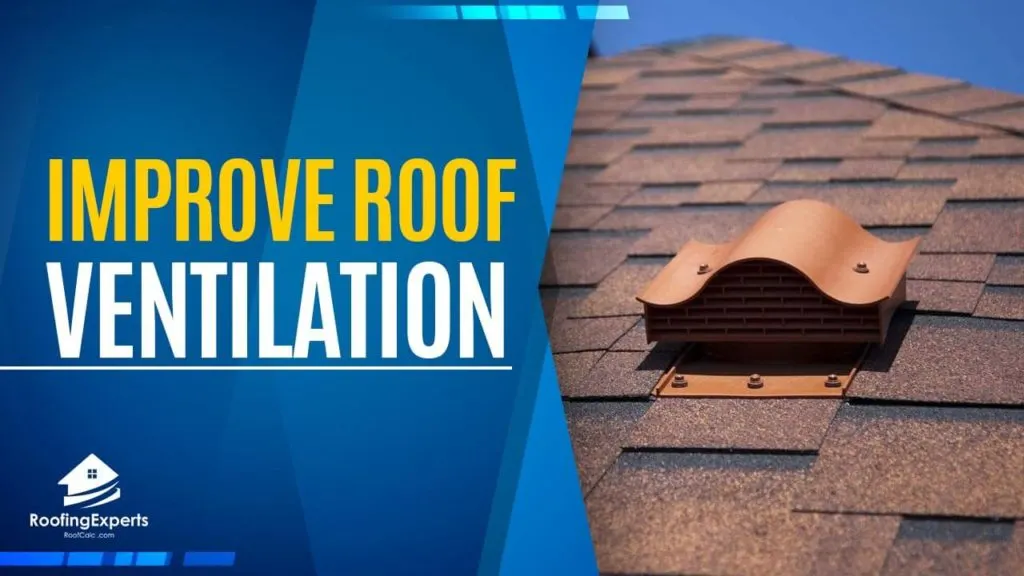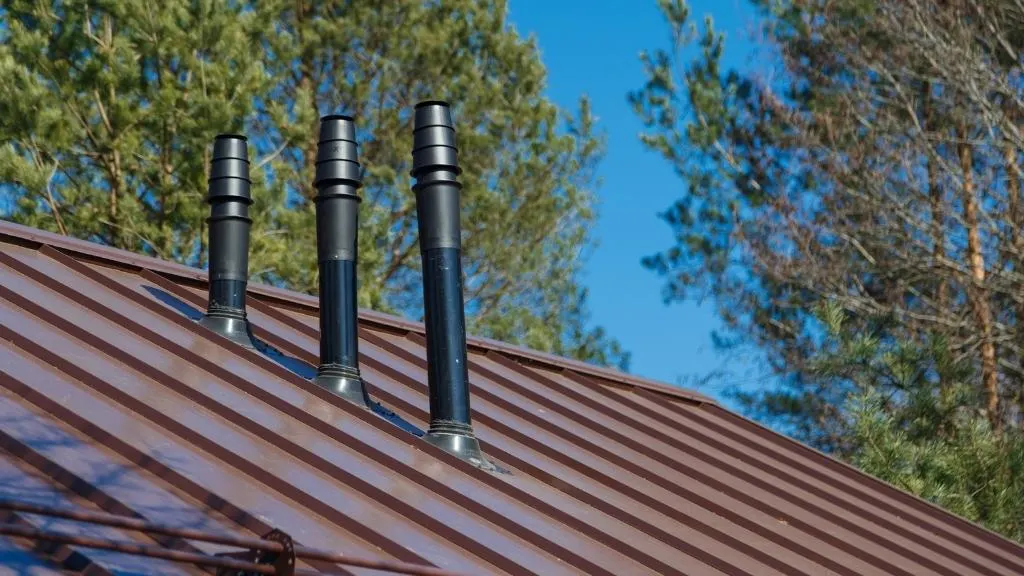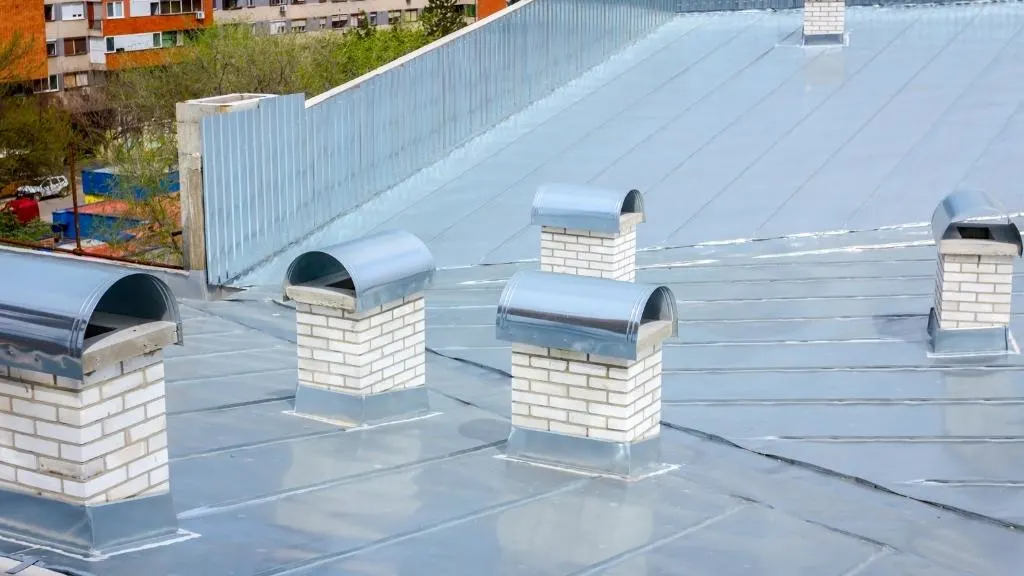
Many people think that a roof is just a flat surface to walk on. In reality, it’s a place where water vapor condenses and can accumulate. If the air in your home becomes too humid, you may need to have ventilation for your roof or risk mold infestation.
Air vents near the eaves of your roof are important for this process because they allow moisture to escape from the attic space below your roof so it does not build up and cause problems with insulation or ceilings inside your house.
In this blog post, we will go over some tips on how to improve roof ventilation so you can keep humidity levels under control and prevent mold from growing in damp spaces within the walls of your house!
What is Roof Ventilation?
Roof ventilation is the process of exchanging indoor air with outdoor air in order to control humidity levels, improve energy efficiency, and reduce the occurrence of moisture-related problems.
When you have proper roof ventilation, it helps keep your home cooler in summer and warmer in winter. Roof vents also provide a way for smoke and other pollutants to escape without entering the home.
Why Is It Necessary to Have Good Roof Ventilation?
A well-ventilated roof is necessary to keep your home comfortable and help reduce the risk of moisture damage. Without proper ventilation, your roof can become hot and humid, which can lead to mold and mildew growth. Roof ventilation also helps prevent ice dams from forming, which can cause water damage to your home.
There are a number of different types of roof ventilation systems, including ridge vents, roof vents, and gable vents.
- Ridge vents are the most common type of roof ventilation system, and they work by allowing air to flow through the ridge of the roof and out the eaves.
- Roof vents are installed on the roof surface and allow air to flow into the attic space.
- Gable vents are installed in the gable ends of your roof and allow air to flow into the attic space. Ridge vents, roof vents, and gable vents should be spaced about eight inches apart for maximum effectiveness.
Besides ventilation systems, there are other ways you can improve the ventilation in your home’s roof system. Installing insulation on your roof deck is an effective way to keep heat from reaching your attic, and adding insulation will also prevent condensation in the roof sheathing.
Installing ventilation channels beneath the insulation increases air flow in your home. You should install insulation on top of your roof deck if you do not have enough overhang to shade the roof sheathing below the thermal insulation.
If you are having problems with moisture damage, ice dams, or heat buildup in your attic, it is probably time to install a roof ventilation system. A professional can help you choose the right type of ventilation system for your home and install it correctly. By improving the ventilation in your roof system, you can help keep your home comfortable and protect it from moisture damage.
How to Improve Roof Ventilation
There are a few ways that you can improve roof ventilation in your home:
- Install attic fans, which will pull hot air out of the attic and replace it with cooler outside air.
- Make sure the ridge and gable vents on your roof are clear of debris so they can trap in cool outside air.
- Have an attic insulation system installed that is suitable for your climate zone since this will help keep warm air inside during winter months while preventing heat from getting trapped in the attic during the summer.
- Install soffit and ridge vents to help air escape without letting insects, birds, bats and other critters into your home. Doing this will also reduce condensation problems that can lead to mold growth around eaves of roofs where ventilation is poor or nonexistent.
- Make sure soffit vents are free of obstructions, which can limit airflow into the home and lead to condensation problems in areas that get very hot or cold.

How Roof Ventilation Affects Humidity Levels
If the humidity levels in your home are too high, it can lead to a number of problems such as:
- Mold and mildew growth on walls, ceilings, floors, and furniture
- Damage to building materials such as wood, paper, ceiling tiles and insulation
- Peeling paint and wallpaper
- Discoloration of fabrics
- A musty smell throughout the home, which is sometimes mistaken for a gas leak or other problem
What Causes High Humidity?
There are many factors that can cause humidity to rise in your home. Some common causes include:
- Large numbers of people living indoors without adequate ventilation systems installed to remove humidity
- Cooking, bathing and laundry habits that produce a lot of moisture
- Leaking roofs, windows and pipes
- Use of humidifiers in winter months to add warmth to the air
- Closing off vents or doors to unused rooms in order to save energy
How Can I Reduce Humidity Levels?
If you have high humidity levels in your home, you can take steps to reduce them by:
- Opening windows and doors to allow fresh air to circulate
- Installing exhaust fans in bathrooms and kitchens
- Improving roof ventilation by installing attic fans, soffit vents and ridge vents
- Reducing the use of humidifiers
- Making sure laundry, cooking and bathing habits don’t produce too much moisture
- Fixing any leaks in roofs, windows or pipes
- Closing off vents or doors to unused rooms to save energy
Tips To Improve Proper Roof Ventilation
In order to have proper roof ventilation, it is important to keep the following in mind:
The type of roof ventilation system that you install should be based on your climate zone and the size of your home.
- Vents should be clear of debris so they can function correctly.
- Soffit vents should not be blocked off by insulation, wall plates or other construction materials.
- Ridge vents should not be blocked by insulation, shingles or lawn furniture.
- Keep in mind that the number one factor affecting roof ventilation is location. The closer you are to a body of water, the more likely it will have high humidity levels due to evaporation at night when temperatures drop.
- Proper ventilation also reduces the chances of mold growth in your attic.
- Install Attic Fans to Improve Ventilation in Your Home
- An easy way to improve roof ventilation is by installing an attic fan that will pull hot air out of the attic and replace it with cooler outside air.
- Attic fans can save you money on your energy bills by helping your home stay cooler in the summer and warmer in the winter.
- They also help reduce moisture levels, which can lead to mold growth.
- Attic insulation system that is suitable for your climate zone since this will help keep warm air inside during winter months while preventing heat from getting trapped in the attic during the summer.
Benefits of Proper Roof Ventilation
In a properly functioning attic, outdoor temperatures are able to be reliably raised and lowered by the solar/radiant heating and cooling of a house. This stimulates airflow within a home while minimizing unwelcome drafts.
Homeowners may not realize that airflow in attics is also necessary for comfort during hot summer months while at the same time protecting against ice dams and moisture damage in winter. Proper roof ventilation also helps to reduce a home’s cooling and heating costs, improves the quality of indoor air, and extends the life of roofing materials.
The benefits of roof ventilation are summarized below:
- Improved comfort – Airflow within a home helps to evenly distribute heat and cool air. This results in a more comfortable environment and minimizes drafts.
- Reduced cooling and heating costs – Proper roof ventilation helps to improve the efficiency of a home’s cooling and heating systems by allowing them to operate at lower temperatures. This can lead to significant savings on energy bills.
- Improved air quality – Ventilation removes moisture, pollutants, and odors from the air within a home. This results in reduced risk of mold growth, mildew, fungus, rusting on metal components (fans), and corrosion to energy equipment like air conditioners and furnaces.
- Extension of roofing materials – Solar/radiant heating of an attic causes some components to expand and others to contract. Heat buildup in an attic can cause uneven expansion and contraction of roofing materials, resulting in the formation of cracks and leaks in a home’s roof over time. Proper ventilation reduces heat build-up by passively drawing air through a home’s soffits rather than attempting to force it out with fans/equipment which increases pressure. A cool attic also helps to stave off premature wear of roofing materials.
- Reduction of ice dams – Proper roof ventilation removes moist air from the upper regions of a home during winter months, helping to reduce the formation of ice dams at the edges of a roof which can result in leaks and water damage. When sufficient snow accumulates on a roof, the heat from the home melts the snow at the lower edges. If this melt-water is not allowed to escape, it will refreeze and form an ice dam. The added weight of the ice dam can cause damage to roofing materials and gutter systems.
While there are many benefits to proper roof ventilation, there are also drawbacks that homeowners must consider prior to undertaking the installation of roof vents.
Lastly…
Solar heating on an uninsulated attic can cause overheating in summer months, resulting in discomfort for those who live within the home. Greater quantities of moisture may be drawn into attics which can lead to mold growth and other moisture-related problems.
Also, increased airflow in the upper regions of a home may result in dryer air at lower levels. Finally, if insulation is not installed below roof vents, they can become the conduit through which heat escapes from a home during winter months. For these reasons, it is important to consider the climate of an area before installing roof vents or ridge ventilation.

